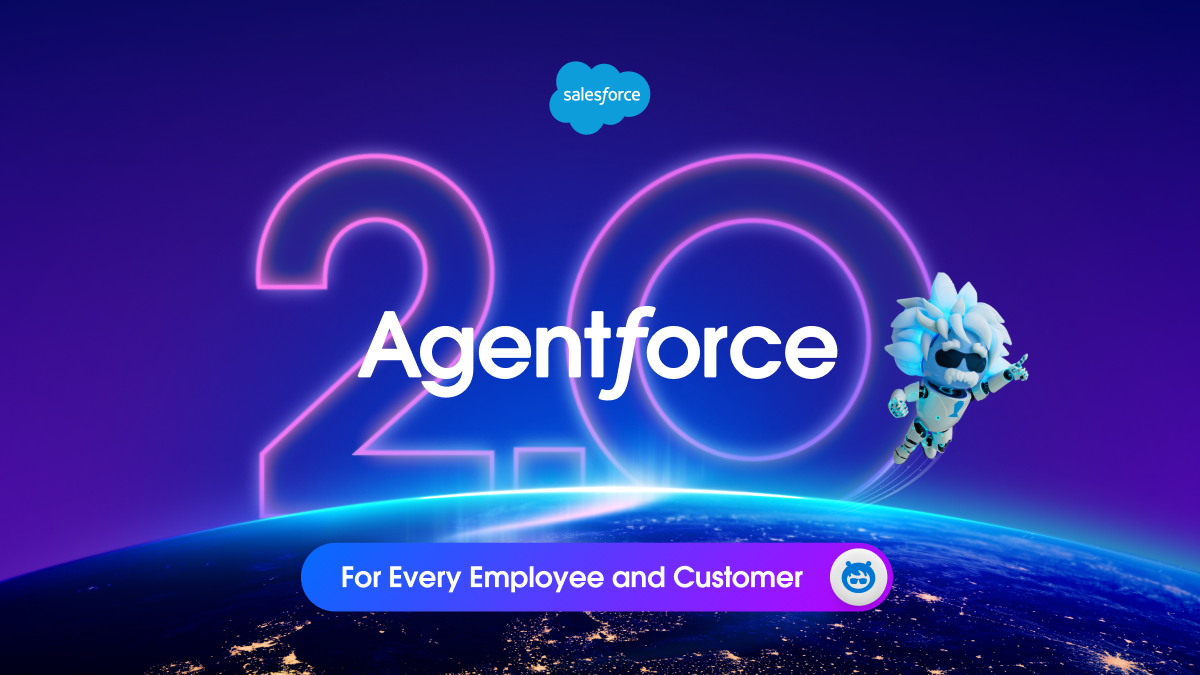Salesforce has once again raised the bar with its latest upgrade to the AgentForce platform – AgentForce 2.0. This new version brings a host of exciting features designed to enhance customer service, improve productivity, and make the agent experience smoother than ever before. In this blog, we will explore what’s new in Salesforce AgentForce 2.0 and how Winklix, as an experienced Salesforce implementation partner, can help you make the most out of this powerful tool.
What’s New in Salesforce AgentForce 2.0?
- AI-Powered Insights and Automation
One of the most anticipated features in AgentForce 2.0 is the deep integration of artificial intelligence (AI) tools. With Salesforce’s AI capabilities, agents can now leverage advanced automation to streamline routine tasks and gain real-time insights into customer behaviors and preferences. The new AI-driven tools help provide proactive service, reduce manual interventions, and improve overall agent efficiency. - Enhanced Agent Experience with Customizable Dashboards
The revamped AgentForce platform includes a customizable agent dashboard that allows each user to tailor their workspace according to their preferences and roles. Agents can now access key metrics, performance stats, and customer details at a glance, making it easier to prioritize tasks and provide faster, more efficient support. - Omni-Channel Support
Salesforce has enhanced its omnichannel capabilities in AgentForce 2.0. Agents can now handle customer inquiries across multiple communication channels, such as email, chat, social media, and phone, all within a single interface. This seamless experience ensures that no customer inquiry falls through the cracks, no matter how it comes in. - Real-Time Collaboration Tools
Collaboration is key when solving customer issues, and with AgentForce 2.0, Salesforce has introduced real-time collaboration features like team chat, case sharing, and co-authoring. Agents can collaborate more effectively, get instant feedback from supervisors, and ensure that complex issues are addressed quickly and accurately. - Integrated Knowledge Base
Salesforce has embedded its knowledge base directly into the agent interface. With easy access to relevant knowledge articles, agents can now find solutions faster, answer customer queries more accurately, and improve their overall resolution times. This integration also helps with onboarding new agents, as they can quickly learn from existing solutions. - Improved Reporting and Analytics
The new reporting features in AgentForce 2.0 provide enhanced visibility into agent performance, customer satisfaction, and case resolution times. These insights empower businesses to fine-tune their support operations and improve service delivery, helping agents to consistently meet and exceed expectations.
How Winklix Can Help You With Salesforce AgentForce 2.0
Winklix, with its expertise in Salesforce implementation and customization, is your go-to partner for ensuring that your business fully leverages the power of AgentForce 2.0. Here’s how we can assist:
- Seamless Implementation and Setup
Migrating to Salesforce AgentForce 2.0 can be complex, but Winklix makes the process smooth and efficient. Our experienced Salesforce consultants will ensure that the platform is configured to meet your specific business needs, helping you get up and running in no time. - Customization to Fit Your Business Needs
Every organization has its own unique customer service requirements. Winklix offers bespoke customization to Salesforce AgentForce 2.0, tailoring workflows, dashboards, and AI tools to suit your business model. We ensure that the system is fully optimized for your team’s needs, enhancing productivity and customer satisfaction. - Training and Support
To ensure your team is fully comfortable with the new features, Winklix provides comprehensive training sessions. We offer hands-on training to your agents so they can take full advantage of the AI-driven tools, omnichannel support, and reporting features in AgentForce 2.0. Additionally, our ongoing support ensures that any issues are resolved promptly. - AI Integration
Implementing AI tools can be a daunting task, but Winklix has the expertise to integrate Salesforce’s AI capabilities into your existing workflows. From automating tasks to delivering real-time customer insights, our team will help you unlock the full potential of AI within AgentForce 2.0. - Ongoing Optimization and Updates
With Salesforce continuously improving its platform, Winklix ensures that your AgentForce 2.0 instance stays up to date with the latest enhancements. We monitor your system’s performance, suggest improvements, and handle system upgrades so that you can focus on what matters – delivering exceptional customer service. - Data Analytics and Reporting Setup
We understand the importance of data-driven decision-making. Winklix helps you set up and customize reports and dashboards, allowing you to track key performance indicators (KPIs) and gain insights into your support operations. By leveraging these analytics, your team can continuously improve performance and customer satisfaction.
Conclusion
Salesforce AgentForce 2.0 is a game-changer for customer service teams, offering powerful new features that streamline workflows, enhance agent productivity, and deliver superior customer experiences. With Winklix’s Salesforce expertise, you can fully harness the potential of AgentForce 2.0 and transform your support operations.
Let us help you navigate this powerful platform, customize it to fit your business needs, and optimize it for peak performance. Contact Winklix today to learn how we can take your Salesforce experience to the next level!




